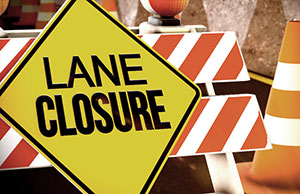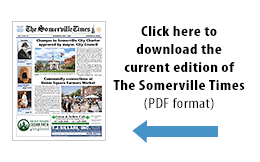
City officials are taking proactive measures to help lessen the strain on neighborhoods that will be affected by the Ball Square Broadway Bridge closure this spring.
Easing the pain as the Ball Sq. Bridge closure unfolds
*
By Jim Clark
With the Ball Square Broadway Bridge closure due to take place sometime in March, many are wondering just how badly traffic congestion throughout the immediate vicinity and neighboring areas will be.
While some wonder, others are taking action in hopes of mitigating the closure’s impact by seeking to make effective preparations in advance of the event.
Ward 5 Alderman Mark Niedergang is one of many who are strongly advocating for taking aggressive steps to assure that the best possible preparatory measures are properly put into place in a timely manner.
At the latest regular meeting of the Board of Aldermen, Niedergang – along with order co-sponsor Ward 6 Alderman Lance Davis – called for the Executive Director of the Office of Strategic Planning and Community Development (Transportation and Infrastructure) report to the Board in writing no later than February 4 about physical traffic calming measures, and other traffic calming measures, to be deployed in the Ball Square neighborhood to slow the speed of cut-through traffic before the Ball Square Broadway Bridge closes, currently scheduled by the GLX Team for around March 1.
Additionally, Niedergang and Davis co-sponsored an order asking for all street direction signage in the affected area to be reviewed and to add additional signage to make the directions of streets super clear, as out-of-town drivers will be cutting though that neighborhood with its highly unusual and unconventional traffic patterns once the Ball Square Broadway Bridge closes, and are quite likely to go the wrong way down the many one-way streets if signage is not startlingly clear.
Moreover, Niedergang has been pounding the pavement, going door-to-door throughout his ward, informing residents of what they can expect over the course of the next year, and listening to their concerns in turn.
Currently, Niedergang’s own concerns are focused mainly on seeing that physical traffic calming infrastructure gets put in place to prevent people from driving too fast through the neighborhood. The specific focus is the area between Cedar Street, Highland Avenue, College Avenue and Broadway, around which the planned detour routes will run.
“It means there is going to be thousands and thousands of vehicles diverted onto those streets,” Niedergang explains. “And my main concern is that a lot of those vehicles will be stuck in traffic, especially during rush hour, and they’ll be looking to cut through the neighborhoods that those streets surround to get where they’re going to faster.”
Niedergang says that he is very concerned about the well-being of the people in those neighborhoods, their actual physical safety.
“The streets in that neighborhood are very strangely laid out,” according to Niedergang. “I actually think in a very good way. But they’re very odd in that many of them kind of go two different directions and meet at Kidder Ave. It’s very strange. Boston Ave. goes in three different directions along its length and it’s probably half a mile long in total, or even less than that.”
This strangeness, Niedergang believes, can provide a traffic calming effect in itself, except he is concerned that people will just ignore the signs.
“Not because they’re bad people or bad drivers,” says Niedergang. “But because these streets are so unusually laid out they’ll simply miss them and not be aware of them.” This is why the order was put forward requesting enhanced signage.
“More important are things like speed bumps or street narrowing, whatever can be done,” according to Niedergang. “Because people ignore signs. That’s just the reality of it.”
One way to get people’s attention is to have a speed bump, and that forces a driver to slow down, according to Niedergang.
“Unfortunately, nothing has been done, and as far as I can tell – despite promises – there is no plan to do anything,” Niedergang said. “At least until the spring when the weather warms up.”
Niedergang speculates that there may be some street painting done, but he is unsure because nothing has been done as of yet that was previously promised. He feels that painting is helpful, but not as effective in controlling traffic as speed bumps or other physical barriers can be.
Niedergang says that one thing that will make a difference is a shuttle van service approved by the city that will carry people who are not physically able to walk the three-quarters of a mile detour around the bridge. These will also help people get to their bus stops.
There are also plans for police presence around detour routes where cars might mistakenly get into the neighborhoods.
Also, the MBTA has tested their buses on the detour routes to make sure that they can navigate safely through the area.
“What I’m not happy about is that the traffic calming infrastructure is not in place in the neighborhoods,” Niedergang says. “There doesn’t seem to be a serious plan to do traffic enforcement in those neighborhoods. In other words, it would be good to have police in the neighborhoods to stop people speeding through.”
Niedergang is committed to seeing that as much of these options as possible become a reality prior to the closure.















Shouldn’t there already be a plan, or plans, in place, instead of all this last-minute scrambling? Easpecially now that we have had our first signficant snowfall of the season. It seems to me any painting should have been done months ago. Not that paint on the roads will make the thousands of detoured vehicles disappear.
I think that’s part of the point of the article. Aldermen have been asking for these measures to be taken and nothing has happened. Time to lean on the relevant city departments – * cough – Transportation and Infrastructure etc. – cough *
The Aldermen ignored this, as did the city administration and relevant departments, until last summer. You can’t advocate for something and then are either ignorant or lying when you say you didn’t know this would happen. They didn’t know the trains would require hundreds of trees to be clear cut? They didn’t know large areas of the city would be shut down and transformed forever? Again, they’re either stupid or they’re lying.
What planet are you on? The extent of the problems arising from the bridge closing weren’t even known until last summer, and the Aldermen have been trying to get things ready from the very beginning. It’s certain city departments * cough * cough * that are dragging their feet. Sounds like you were born yesterday.
Can we get El Chapo’s guys to build a tunnel so I won’t have to go around? This is going to be horrible